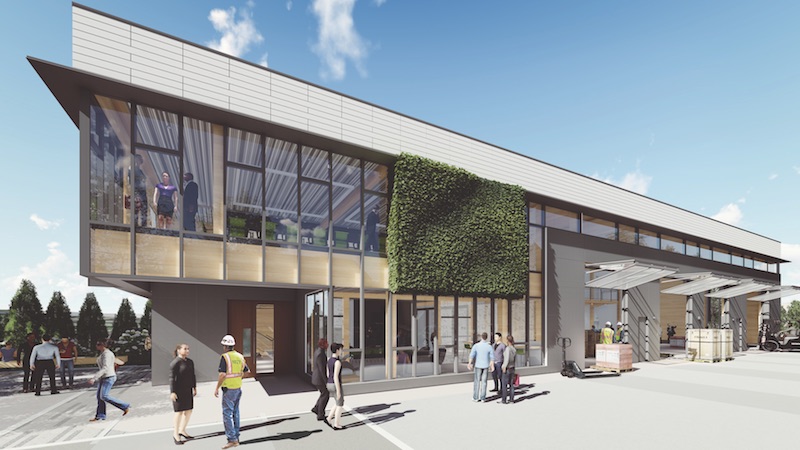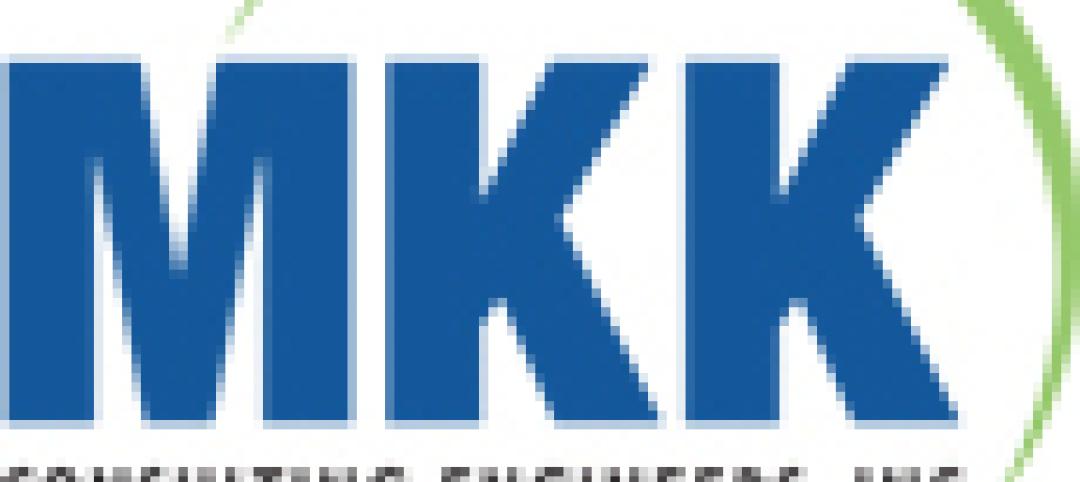The latest developments at construction and construction management firms in 2017-18:
Bernards introduced market segment experts to lead the pursuit, management, and construction of all projects through “centers of excellence.” This has allowed a stronger focus on the pursuit process, which has resulted in a better “hit” rate on prospective projects.
Clark Group’s R&D team created Turnover Vision, an interactive punch list dashboard that provides real-time analysis of unit turnover status. The tool analyzes data from the project punch list and organizes it into interactive heat maps and graphs. “This Clark-developed solution enables our employees to spend more time communicating with clients and trade partners, completing punch list items and turning over units, rather than managing documents and printing reports,” according to the firm.
Cortland Partners outfitted a 60-foot-long trailer with a custom-designed classroom, including 46 feet of hands-on learning space, nine specialty training stations, and a video room. This mobile training unit allows the multifamily builder/designer/developer to deliver hands-on training to its employees across 11 states.
See also: Top 130 Contractor Firms - 2018 Giants 300 rankings
See also: Top 80 Construction Management Firms - 2018 Giants 300 rankings
Project management firm Cumming launched two services: project controls and energy and sustainability. Its energy and sustainability team provides upfront auditing of its clients’ mechanical and electrical systems to ensure optimal efficiency. The project controls team uses automated reports and dashboards that illuminate key project metrics, which ultimately provide improved transparency on projects.
Fortis Construction is the only contractor in Oregon implementing the ConXtech Structural System, a chassis-based modular building system. For Kaiser Permanente’s new 90,000-sf Beaverton Medical Office Building, this solution provided early pricing guarantees during schematic design and day-one BIM model integration with improved accuracy of structural details. Fortis erected the entire structural system in just 12 days.
Gilbane is utilizing Triax Technologies’ Spot-R wearable, wireless communication devices to streamline project management. Spot-R tracks where work is happening, capturing time and attendance in real time. Heavy equipment can be tagged to ensure safety and operation by a certified worker.
Haselden Construction developed a process that adds QR codes on equipment and door frames on projects, resulting in expedited issue resolution during punch list and the ability for the owner to proactively schedule maintenance upon construction completion. During punch list, once an issue is recorded, it coordinates all identified issues to everyone’s iPads, making tasks assignable and shareable.
HITT Contracting broke ground on Co|Lab, a space dedicated to testing products and ideas that will have a direct impact on the building industry. Designed by William McDonough + Partners, the cross-laminated timber (CLT) structure will serve as an exhibit, telling the story of mass timber buildings, living walls, and HITT’s application of VDC methodology and tools on the project. The contractor is looking to crowdsource ideas from existing design and construction partners, industry peers, and the public. Anticipated opening: summer 2019.
James G. Davis Construction is utilizing the last planner system (LPS) on a growing number of projects. LPS implements a series of scheduling and programming tactics, such as pull planning, to create and maintain buy-in at all levels at every stage in the construction process.
Kinsley Construction implemented 5D estimating software that allows estimators to visualize the project and confirm quantity takeoffs for any 3D model. The firm also uses 3D conceptual modeling/estimating software that creates detailed “rough order of magnitude” estimates by assigning costs to the 3D geometry. It allows teams to perform cost analysis and explore site selection, development concepts, and building layout in a single meeting.
Linbeck Group applies Lean principles to all work processes. Within the past 18 months, its War On Waste (WOW) program has published more than 50 videos demonstrating how its teams eliminate waste through process changes.
Messer Construction has made steps to improve its safety performance through Lean daily management. Based on the collection and analysis of jobsite metrics, the firm created an action plan for the use of gloves on the jobsite. It required all Messer sites to implement 100% gloves at all times, starting October 2017. Hand injuries have dropped by 69% since then.
Two years after its launch, PCL Construction Enterprises’ PartsLab—a free Autodesk Revit addition that streamlines the management of design data for GCs—has been downloaded 1,500 times and has more than 370 registered users.
Pepper Construction Group has increased its investment in virtual and augmented reality workflows, leveraging the technology in the field. The impacts have been immediate and impressive. For instance, when used early on projects, AR/VR has replaced physical mock-ups, resulting in savings of $100,000 or more on a single project and reducing the overall project costs by driving earlier informed decisions.
Robins & Morton is executing its largest offsite/prefab project to date. For the new $255 million Shawn Jenkins Children’s Hospital at the Medical University of South Carolina, in Charleston, the firm built a 80,000-sf prefabrication warehouse, where all project trades are working together in a controlled environment to provide just-in-time materials delivery.
Rogers-O’Brien Construction has integrated collaborative project planning (CPP) into its preconstruction services. The goal of CPP is to proactively impact project costs and schedule by reducing the number of potential RFIs required to clarify design intent. It focuses on engaging with the design team, its consultants, and the owner immediately and intensely after the firm’s selection.
S.M. Wilson created a two-year leadership program to serve as a development tool for succession planning and retention, and to provide greater interaction and access to the current executive team. The firm also revised its onboarding process for new employees to include one year of mentoring, training, rotation through preconstruction and estimating, and field experience.
Skanska is exploring the integration of estimating, modeling, and virtual reality. Using a custom Revit Takeoff Template, the firm extracts material quantities using 3D models and then loads the model and cost information into VR (via the HTC Vive) to create immersive, first-person experiences for customers. By connecting design and material options with cost in VR, Skanska can enhance stakeholder understanding and improve real-time decision-making.
Skender published a report, “101 Ways to Build Smarter,” which provides insights from more than six decades of construction work. Among the 101 ideas:
• Lock in pricing: In an inflationary environment, lock in materials and equipment costs as soon as possible. As prices escalate, it often pays off to pre-purchase materials to avoid price hikes.
• Build lighter and smarter: Sometimes owners ask for materials and equipment that are larger or more powerful than the anticipated use requires.
• Go Lean: Focus on reducing wasted materials, time, and labor costs.
Among Turner Construction’s wide range of VR/AR applications, the firm created a safety education tool that uses a VR environment to provide immersive training for staff members and partners.
W.M. Jordan Company transformed its Project Executive leadership program to focus on Millennial development. It incorporated leadership programs from Harvard University, Wharton School at the University of Pennsylvania, and Stanford University.
Wight & Co. uses a proprietary approach, called SPARK Sessions, to help clients accelerate the design and development of their projects. This interdisciplinary, collaborative process engages teams, as well as the appropriate expertise within Wight & Co., during the earliest stages of a project.
Related Stories
| Oct 26, 2011
Metl-Span selected for re-roof project
School remained in session during the renovation and it was important to minimize the disruption as much as possible.
| Oct 26, 2011
Shawmut Design and Construction awarded Tag Heuer build in Aventura, Fla.
New store features 1,200 sf fit out at Aventura Mall.
| Oct 25, 2011
HKS Science & Technology practice formed
Specializing in the planning and design of highly technical building types, HKS’s Science & Technology practice offers the broadest range of services available to the academic and biomedical research, biotechnology, pharmaceutical and medical device community, including laboratory programming, planning and design, strategic science planning and laboratory equipment planning.
| Oct 25, 2011
Universal teams up with Earthbound Corp. to provide streamlined commercial framing solutions
The primary market for the Intact Structural Frame is light commercial buildings that are typically designed with concrete masonry walls, steel joists and steel decks.
| Oct 25, 2011
Ritner Steel CEO elected to AISC Board
Freund will begin serving on the AISC board of directors, assisting with the organization's planning and leadership in the steel construction industry.
| Oct 25, 2011
Commitment to green building practices pays off
The study, conducted by the Pacific Northwest National Laboratory, built on a good indication of the potential for increased productivity and performance pilot research completed two years ago, with similarly impressive results.
| Oct 25, 2011
DOE issues report on financing solar photovoltaic systems for K-12 schools
The report examines the two primary types of ownership models used to obtain solar installations. This analysis can help school administrators across the country select the best option for deploying solar technologies in their school districts.
| Oct 25, 2011
MKK participates in BSA Engineering Merit Badge day
MKK principal Craig Watts attended the event as a representative of the MEP (mechanical/electrical/plumbing) engineering industry to give scouts an idea of what’s involved in becoming a mechanical engineer, and an overview of a typical day in the life of an engineer.
| Oct 24, 2011
BBS Architects & Engineers receives 2011 Sustainable Design Award from AIA Long Island Chapter
AIA LI also recognized BBS with the 2011 ARCHI Award Commendation for the St. Charles Resurrection Cemetery St. Charles Resurrection Cemetery Welcoming and Information Center in Farmingdale, NY.
| Oct 20, 2011
UNT receives nation’s first LEED Platinum designation for collegiate stadium
Apogee Stadium will achieve another first in December with the completion of three wind turbines that will feed the electrical grid that powers the stadium.

















